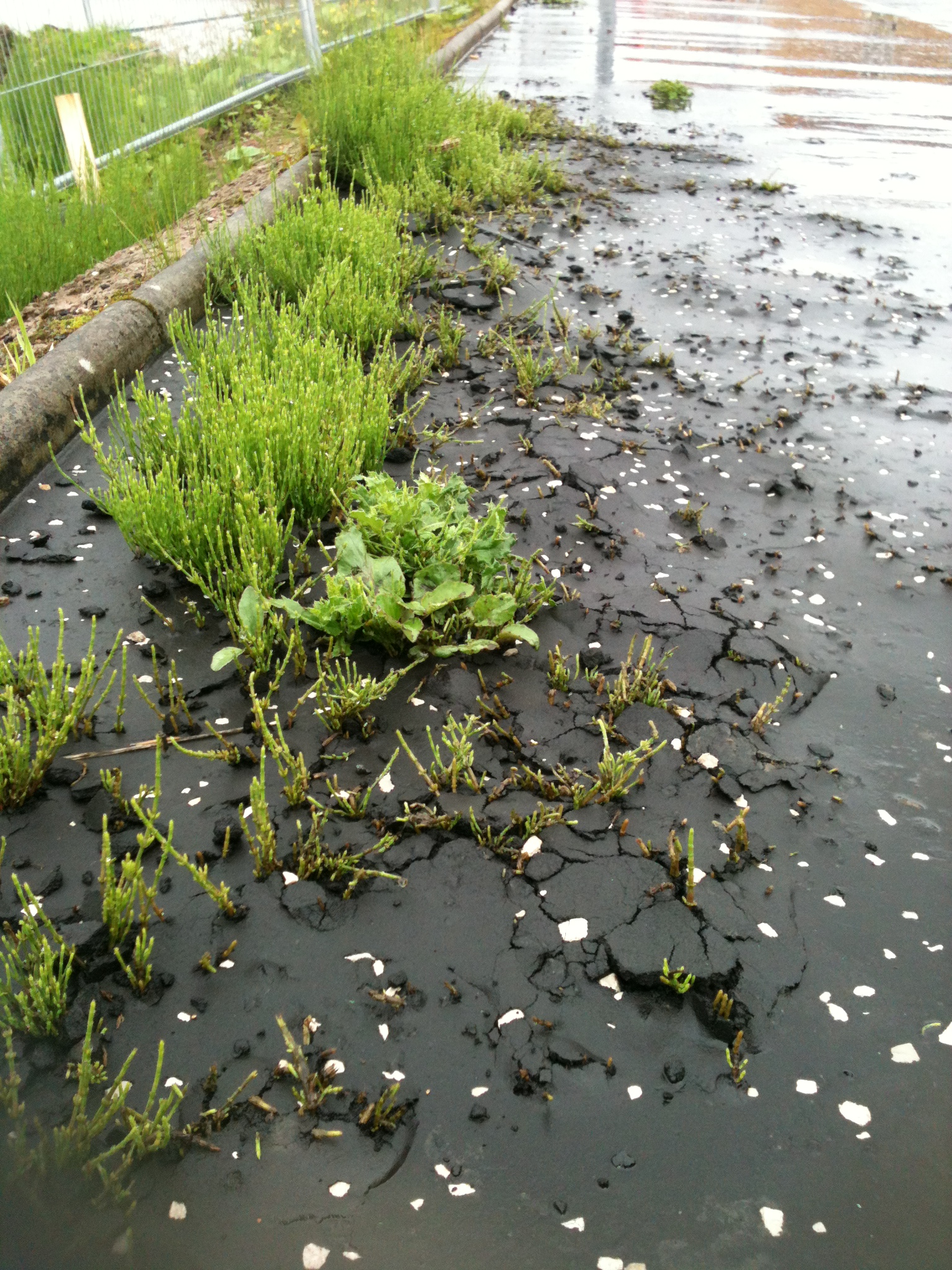
Horsetail (Equisetum arvense)
Horsetail is a Native British plant
While Horsetail is a native plant species and therefore not legislated, many have found it to be the cause of more damage to infrastructure than Japanese Knotweed. It is well known for breaking through tarmacadam, block paved areas, car parks and destroying landscaped areas. Horsetail can result in thousands of pounds worth of repairs being required.
How do you remove / kill Horsetail?
Horsetail is a low growing perennial which has an extensive but fragile root / rhizome system which extend up to 1.5 metres depth from ground level. Leaves form around nodal sheaths on hollow jointed stems. As many gardeners will testify, trying to pull this persistent weed simply results in breaking the stems above ground and this gives no meaningful control. The plant has a waxy coating which means that it is highly resistant to most herbicides; requiring a specialist to ensure effective eradication.
As a member of the fern family, Sphenophyta, Horsetail produces spores in the spring for regeneration. Horsetail is also vegetative meaning that it can regenerate from root fragments. All in all, Horsetail is a tricky species to get under control. With Local Authorities being more aware of the potential damage to new roads and footpaths, there can be difficulty obtaining road adoptions when they are aware of its presence.
Key Points
 Plant regenerates from spores and fragments of live plant and rhizomes.
Plant regenerates from spores and fragments of live plant and rhizomes. Extensive root network
Extensive root network Resistant to many herbicides so difficult to manage and eradicate.
Resistant to many herbicides so difficult to manage and eradicate. Causes extensive damage to hard surfacing such as tarmacadam.
Causes extensive damage to hard surfacing such as tarmacadam. Causes damage to soft landscaping and unsightly.
Causes damage to soft landscaping and unsightly. Customer complaints when new housing.
Customer complaints when new housing. Easily spread.
Easily spread.

General Information
Man first arrived in Britain about 8,000 years ago and virtually all new land plants that have become established since this date have been brought here by humans. We call these new plants non-native species.
Not all non-native species are bad – it is only a minority that have serious negative impacts on our native British species, our health or our economy. These species we call invasive non-native species.
No they are not. Interestingly the plant species which arguably is often found to be the most destructive, Horsetail (Equisetum arvense) is actually a native plant species. It certainly can still be invasive while being native and also very difficult to manage as many gardeners will testify.
While non-natives such as Japanese Knotweed are legislated to control movement; natives are not legislated because they are native to Britain.
As the name would suggest we specialise in the management of Japanese Knotweed. We do however also manage Giant Hogweed, Himalayan Balsam and other controlled plant species even the lesser known ones. We are not just restricted to land species we also advise on aquatics and semi-aquatics. We also manage and control native species too – in particular the mighty Horsetail.
We can help you find the best way to solve your particular problem. We will not try to upsell or exaggerate your situation – we will simply provide your options / explain your situation and associated risks – then work with you until the solution which is right for you presents itself. Simple!

